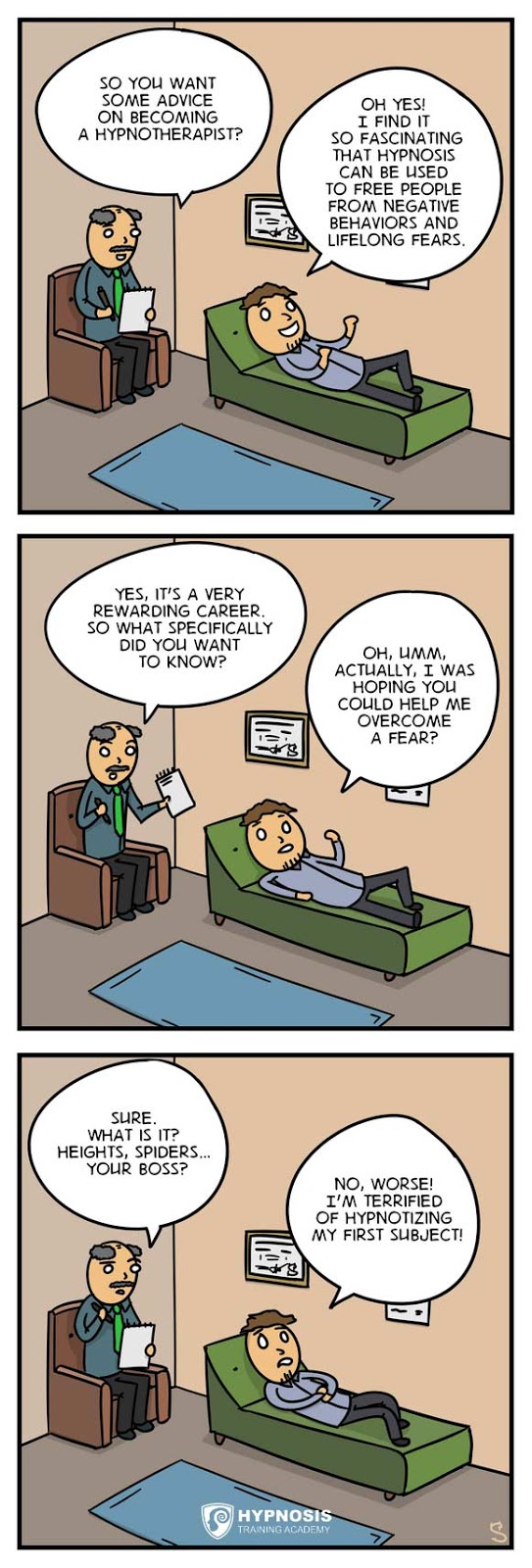
The challenge: how to hypnotize someone in less than 60 seconds.
That’s just one measly little minute.
Barely enough time to boil the kettle, and certainly not long enough to boil an egg.
No matter what you’re doing, 60 seconds is quick. Whatever the activity, it’ll seem like you just got started and then it’s over.
That short space of time is enough to accomplish some things, though. And one of those things is...
...to hypnotize someone.
Ironically, it’ll take you much longer to read this article than to perform a full hypnotic procedure. Yes, it’ll take practice, and yes, there are a lot of separate steps involved. But once you get the hang of it you’ll be able to go through the whole process in a flash.
So what exactly does the 60 second hypnotist process involve?
There are 10 different parts to work through, although some of those parts are actually very short sentences. The whole thing starts with your intention. If you’re a regular reader you’ll recognize that as H+.
Here is a list of the 10 steps with an explanation of what they mean so you know exactly how to hypnotize someone in 60 seconds!
Ready?
1. H+ - Contact - Permission
H+ refers to your intention to do your best for the person you’re going to hypnotize. It means getting switched on so you’re as positive and energetic as possible. With only 60 seconds to work in, you haven’t got time to waste. So you need to jump right in with your mindset already on fire.
To make the process successful in the given time, you need help. Some of that help comes in the form of encouraging your subject to go deeper into a trance as quickly as possible. One way of doing that is by touching them on the arm or shoulder. And that brings us directly to the third element in this stage.
Before you start touching the other person on the arm or shoulder, you need to get their permission. It doesn’t have to be in writing, but you have to get it nevertheless. As well as providing you with a simple but effective tool to deepen the trance, it’s also the first step in breaking down any barriers they might have. If they give you permission to do that, they’ll be willing to give you permission for other things as the induction progresses.
Wow! We’re only at step 1, and there are already 3 things to remember. But don’t worry. The point is that you’ll be doing these 3 things simultaneously. And once you become familiar with the technique you’ll do it almost instantly. Here’s an example of how this first step might work in practice:
"From time-to-time I may want to touch you on the arm or shoulder as part of the work, is it OK with you if I do that?"
That’s it. You’ve asked for permission to make contact. Just make sure you bring your H+ attitude to the ballgame and everything else should flow smoothly.
2. Induce Trance
The second step is where you quickly induce the trance. You don’t need to make a song and dance about it – just go for it. It’s really the simplest step of the bunch, so let’s look at an example before we get to the explanation.
"Close your eyes and go into hypnosis."
You’ll notice that this is in the form of an instruction. You’re not asking them to go into hypnosis, you’re telling them. We can assume that if they’ve given you permission to touch them that they’re going to continue doing what you say. As luck would have it, that’s human nature, which in this case is working in your favor.
At first glance it looks like a pretty innocuous statement. But there’s something else going on. Notice the use of the word "and" in the sentence. If you haven’t spotted it, this is one of those power words.
It’s also a bridging word, linking two things together that might not necessarily belong together. In other words, there’s no reason why closing your eyes should make you go into hypnosis. The one thing doesn’t automatically follow the other. When you state it like this, however, the unconscious mind gets the message and is coaxed into following along. Read More »
Get more articles and experts’ tips on instant induction, putting a subject in trance, and hypnotherapy Hypnosis Training Academy.






